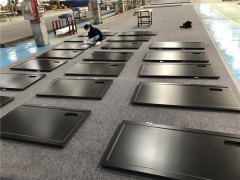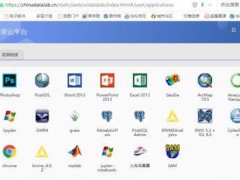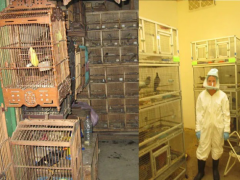Five Collective Sources Guide Us Toward Fume Hood
作为通风柜安全性指南的五种标准的综合运用
Fume Hood Defined
实验室通风柜是一个专门设计的安全装置,在连接通风系统的情况下可以将通风柜内,在实验过程中产生的有害气体排出实验室,可以使实验室工作人员免受伤害。通风柜需由阻燃材料制作,结构包括顶部,三个固定侧面,一面开口。开口处需配备移动门,有时还需要安装额外的防护罩。开口处需有异形入口,通常是导流板设计,以便于进风和防止底部气流逃逸,通风柜会配置挡流板,在大多数情况下会配置旁路系统,以控制通风柜的气流模型并使进气均匀。旁通系统也可以部分封闭以满足变风量系统的要求。通风柜可以摆放在工作台,基座或实验室地面上。(美国科学仪器设备实验室家具协会SEFA-1)
A Laboratory Fume Hood is a safety device specifically designed to carry undesirable effluents (generated within the hood during a laboratory procedure) away from laboratory personnel and out of the building, when connected to a properly designed laboratory ventilation system. A Laboratory Fume Hood shall be made primarily from flame retardant materials including the top, three fixed sides, and a single face opening. Face opening is equipped with a sash and sometimes an additional protective shield. Face opening will have a profiled entry and usually an airfoil designed to sweep and reduce reverse airflow on the lower surface. A Laboratory Fume Hood will be equipped with a baffle and in most cases a bypass system designed to control airflow patterns within the hood and manage even distribution of air at the opening. The bypass may be partially blocked to accommodate Variable Air Volume (VAV) systems. A Laboratory Fume Hood will be set on a bench, a pedestal or the laboratory floor.
▶ Scientific Equipment Furniture Association (SEFA). SEFA 1-2010 Recommended Practices for Laboratory Fume Hoods, 2010 p. 48 section 3.0, Garden City, NY
二、ASHRAE 110-1995
美国采暖、制暖与空调工程师学会
测试内容:
1、气流运动显示测试
2、面风速测试
3、示踪气体测试
即将颁行的新版ASHRAE 110
New ASHRAE 110 Pending
1、更多计算机化的数据——示踪气体测试仪将有数据接口可以直接连接到数据记录仪。
2、改进了烟流测试——将气流流动显示测试中的成功/失败标准删除。增加了对“怠速气流”和“回流”的定义。
3、新的假人测试高度为工作面以上22″,同时描述了落地式通风柜,和假人的摆放位置。
4、新增了附录B(诊断使用)——房间条件,管道泄漏,再次进入,侧风,热效应及其他。
1. More computerized data – The tracer gas instrument shall have output capabilities to allow connection to a data logger.
2. Revised smoke test – Eliminated the pass/fail criteria in Flow Visualization Procedure. Expanded definition of “Lazy Air” and “Reverse Flow".
3. New mannequin height at 22” above work surface and description of mannequin position on floor mounted hoods.
4. Added Appendix B for Diagnostic Use – Room Conditions, Duct Leakage, Re-entry, Cross Drafts, Heat Effects, and more.
三、ANSI(美国国家标准协会)Z9.5指明了ASHRAE 110测试的接收标准
ANSI Z9.5 Specifies ASHRAE 110 Acceptance Criteria
1、在通风柜任一位置释放每分钟4升的示踪气体在平均5分钟的测试中,它的控制标准在出厂测试中不应高于0.05ppm,在现场安装完成后测试中不应高于0.1ppm。
2、气体逃逸量大于以上所诉控制标准的须由设计专家和责任人员共同决定是否可以接受。在实际使用的测试中逃逸量等于或大于0.10ppm,则由责任人员决定是否可以接受。
3、责任方必须决定“合格”的标准。
1. A control level for 5- minute average test at each location conducted at a generation rate of 4L/m shall be no greater than 0.05 ppm for “as manufactured” tests and 0.10ppm for “as installed” (AM 0.05, AI 0.1)
2. Escape more than the control levels stated above shall be acceptable at the discretion of the design professional in agreement with the responsible person (2.42). The “as used” 0.10 ppm level or more is at the discretion of the responsible person (2.3)
3. Responsible parties must determine “pass” criteria
ANSI Z9.5认可了无管式通风柜的节能功效。
ANSI Z9.5 recognizes ductless hoods as a means of saving energy
当您要选择无管式通风柜时,请咨询职业保健专家或您公司内的专家。
Consult your Industrial Hygienist and/or your company’s in-house expert for the appropriate application and use of a ductless fume hood.
四、NFPA 45
美国全国流体动力协会
• 室内通风柜摆放指南
• 排风管信息
• 通风柜无法接受爆炸
• 根据ASTM(美国试验材料协会)E-84测试,内衬板材料的展 焰性需小于25。
• 最小排气量需能有效防止气体浓度聚集,以避免达到爆炸的 浓度下限,通常为25%或者更低。
• Guidelines for hood location in room.
• Duct information.
• Hoods are not designed to contain explosions.
• Liner materials are to have a flame spread of less than 25 per ASTM E-84 test.
• Minimum exhaust flow to be sufficient to prevent concentrations from approaching the lower explosion limit (LEL) typically 25% and lower.
Liu Dong, Li Qiang-ming
《无风管自净型排风柜》标准针对无风管自净型排风柜的工作原理和性能特点,提出了该类产品应用的合理工作流程、需要控制的关键问题等;并且对无风管自净型排风柜的过滤效率、控制浓度和面风速等关键性能的测试方法进行了解读。
Conclusion
1、SEFA-1定义了什么是通风柜,并给我们介绍了其他几种保护柜,以使我们了解他们的区别。
2、ASHRAE 110指明了测试方法,使我们能有效的验证通风柜的性能。
3、ANSI Z9.5提供了ASHRAE 110测试是否通过的判定标准,并提供了节能型通风柜的细节。
4、NFPA-45强调了通风柜材料防火的重要性并指明了通风柜或排风管中化学气体爆炸的浓度下限。
5、职业保健专家和您公司的内部专家,以丰富的专业知识结合安全工作状况,以内外部法规和指南为前提,能为您评估设备的功能。
1. SEFA-1 defines fume hoods and describes other enclosures so we know what they are.
2. ASHRAE 110 specifies the test method to help to qualify the performance of a laboratory fume hood.
3. ANSI Z9.5 provides the acceptance criteria for the ASHRAE 110 test and provides details for lowering energy use in fume hoods.
4. NFPA-45 highlights the importance of non-flammable materials and specifies the lower explosion limit of chemical vapors in a hood or duct.
5. The Industrial Ventilation Expert, Industrial Hygienist, and/or your Company’s In-house Expert – provides a wealth of knowledge to combine safe work conditions, evaluate the function of equipment, comply with regional and local codes and more.
法规下载地址:
SEFA
www.sefalabs.com
ASHRAE 110
www.ashrae.org
ANSI Z9.5
www.ansi.org
NFPA-45
www.nfpa.org
Kurt Rindoks
现任ASHRAE-110 (实验室通风柜性能测试方法) 委员会委员,是即将面世的新版“ASHRAE实验室设计指南”的作者之一。拥有18项美国专利, 大都是在通风柜设计领域。曾任SEFA理事会成员,主导起草SEFA 8 (实验室橱柜推荐实施规程),并参与起草SEFA 1 (通风柜推荐实施规程)。
*本文为Kurt Rindoks 参加由上海卓思智能科技股份有限公司主办的2015“未来实验室论坛安全发展学术年会”时演讲的内容,由“未来实验室”整理发布





